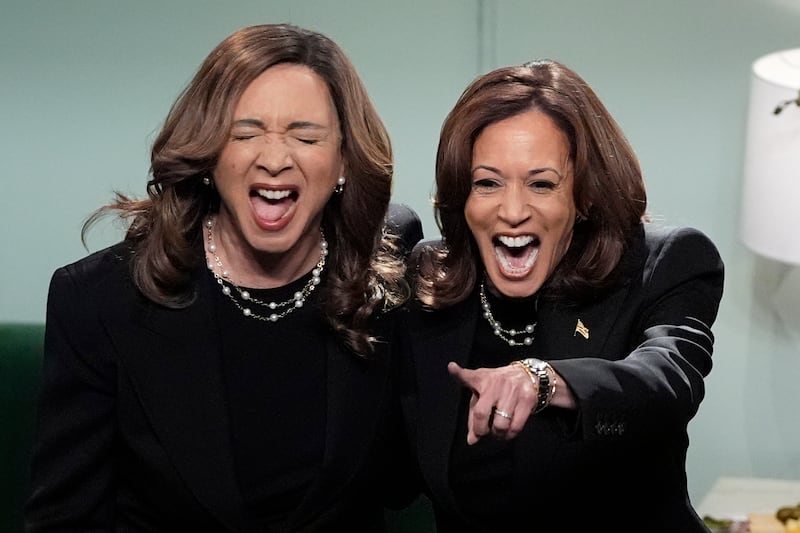Satirical depictions of officials have been a mainstay of our democracy for 250 years. During that time, the methods of humorous criticism have evolved from newspaper cartoons to television programs. Social media is now fulfilling more of this role. How is 21st century technology, especially memes, changing the landscape of politics today?
Cowley: In good humor, Vice President JD Vance donned a wig for Halloween, dressing as an internet meme intended to poke fun at him. Self-deprecating humor, especially from someone seen as a bully, can endear him to voters. It shows he can dish it out and take it.
Perhaps I should first explain what a meme is. A meme is an image, video or piece of text, typically humorous in nature, that is spread rapidly by internet users. These posts are pithy, short and easy to understand. This simplicity, paired with easy-to-comprehend themes, can have tremendous sticking power, like a catchy slogan or jingle produced in the heyday of Madison Avenue marketing firms, making them the political cartoons of the modern era.
The White House social media accounts have departed from posting traditional, highly edited photos of Rose Garden ceremonies to promulgating self-aggrandizement hype reels or AI videos pushing boundaries to disparage political opponents, using satire and internet-specific humor.
Deseret News reporters Emma Pitts and Eva Terry point out Trump’s mastery of media. From reality TV star to internet troll to Commander-in-Chief, he has honed his craft. He has led Republicans from being the curmudgeon party of old fogies to trend-creating cool kids. Meme prowess is a je ne sais quoi that is hard to define, but you know it when you see it, and Republicans have it. Democrats just don’t, perhaps because they are afraid to offend and get canceled, a concern Republicans abandoned when Trump took office.
Pignanelli: “Satire is traditionally the weapon of the powerless against the powerful.” — Molly Ivins
The earliest memories of political satire are my father laughing at Pat Oliphant’s drawings in the morning newspaper lampooning someone important. Oliphant won the 1967 Pulitzer Prize for editorial cartooning and famously criticized the award. His impact on political deliberations was widely acknowledged. Comic strip artist Garry Trudeau was another potent and effective critic (who won the 1975 Pulitzer).
Then came Saturday Night Live. For decades, their humorous depictions of Gerald Ford, George H.W. Bush, Bill Clinton, Al Gore, Sarah Palin and other leaders affected how Americans viewed them.
In many other countries, such ridicule often garners punishment. Thus, we must accept mockery of our officials to remind us, and especially them, that they are imperfect and subject to their constituents.
Although unsure how a “meme” is created, I am grateful that they are fulfilling this critical foundation of democracy.
Earlier this year, online streaming surpassed broadcast/cable with almost half of TV viewership. Because voters and consumers are changing how they consume media, there is an impact on political advertisements. Are they still effective, and where should candidates spend their resources?
Cowley: In campaigns I am involved in, a larger percentage of the budget is being allocated to online ads and internet-based short-form videos rather than TV or radio ads. The goal of campaigns is to reach as many targeted voters as possible with the most convincing and salient message at the lowest cost per view. Today, there isn’t even a comparison; online ads are the best bang for their campaign buck. They are easy to tailor for microtargeting and can be changed quickly and redeployed to address the rapid evolution of campaign topics, whereas expensive TV commercials can’t do either.
Successful campaigns are not just about who can spend more and blanket the airwaves. If that were the case, Kamala Harris would be occupying the White House right now. Her campaign outspent Trump nearly 2 to 1.
Trends in campaigns change every cycle. As voters become more familiar with online ads, they will begin to lose their salience and become white noise. Campaign professionals will need to step up their game to create more viral content.
Pignanelli: National electioneering was relatively easy until a decade ago. Campaign operatives dumped massive amounts of money into television advertising to influence voter behavior. As Renae notes, this tactic no longer works. Carpet-bombing the airwaves with cookie-cutter ads developed by uncreative consultants wastes resources. Television advertising can be effective if it is either humorous or strategically utilized. Social media offers opportunities to target voters at less cost. Yet, the 2026 elections will still feature the modern version of blacksmiths (consultants) trying to remain relevant in the age of the automobile.
How do these changes in media and political ads impact campaigns in Utah?
Cowley: Between Congressional midterms, legislative races, county elections, and multiple referendums and initiatives all on the ballot in 2026, successful campaigns will be those that can break through the deafening political noise to reach voters with memorable messaging through modes already saturated with political ads. Creativity will be king.
Pignanelli: Control of the United States House of Representatives may depend on Utah’s 2026 election results, causing the infusion of enormous resources from outside the state. Consultants will lazily recommend boring television ads. However, the winners of tight races will be those who employ effective tactics.



